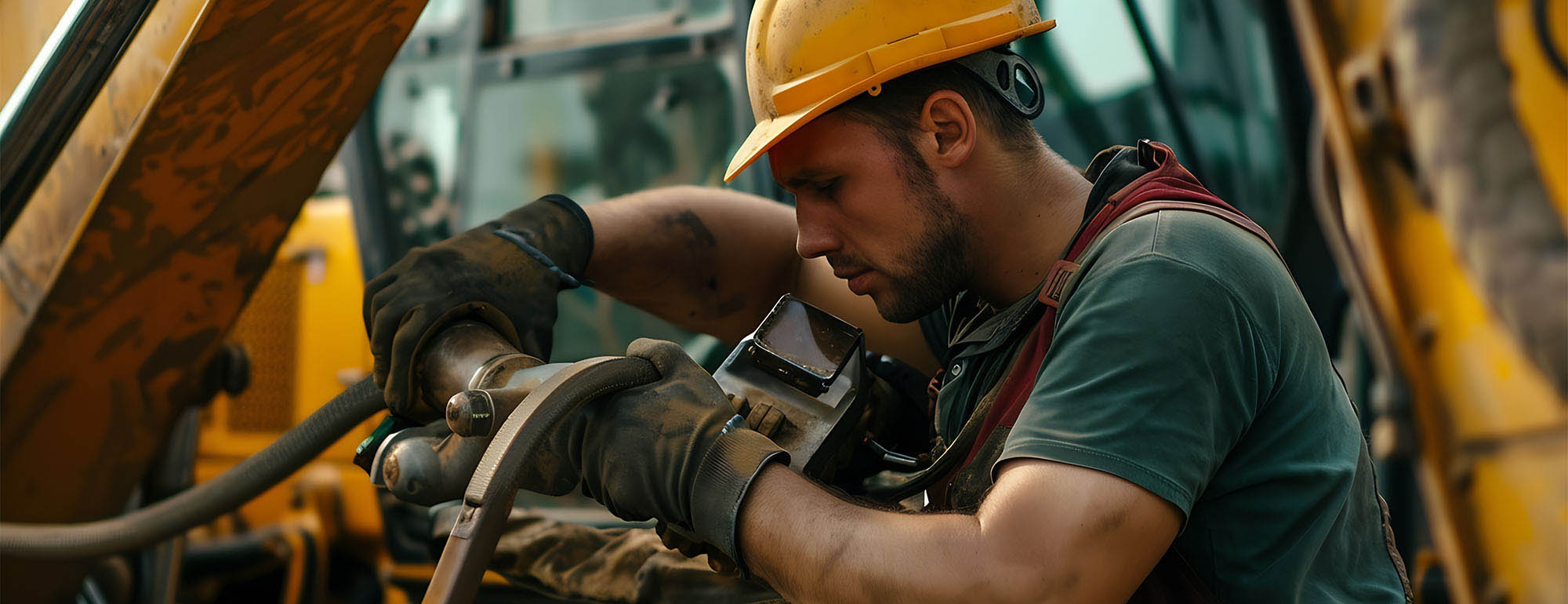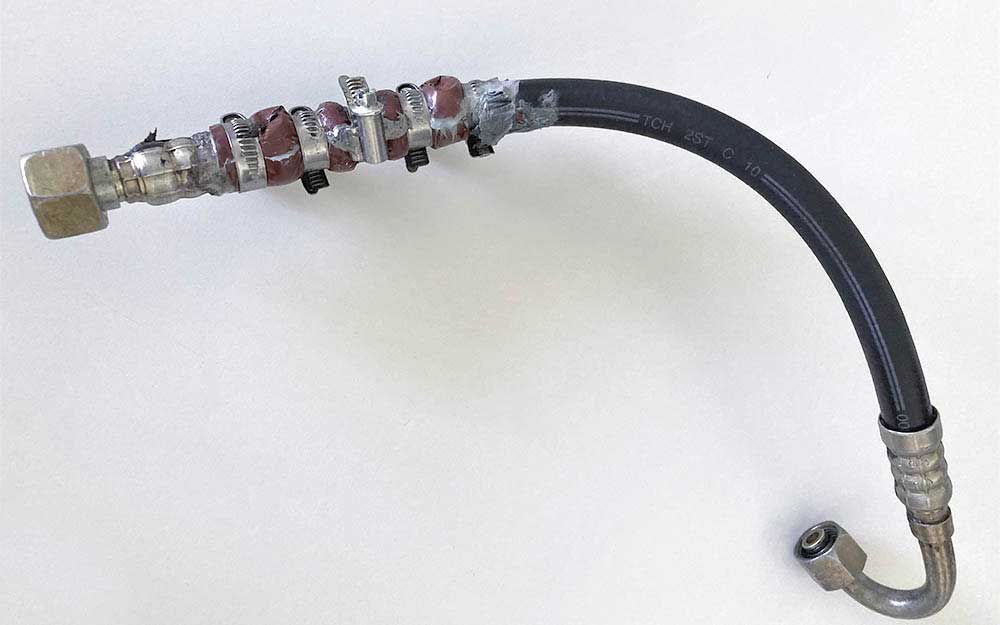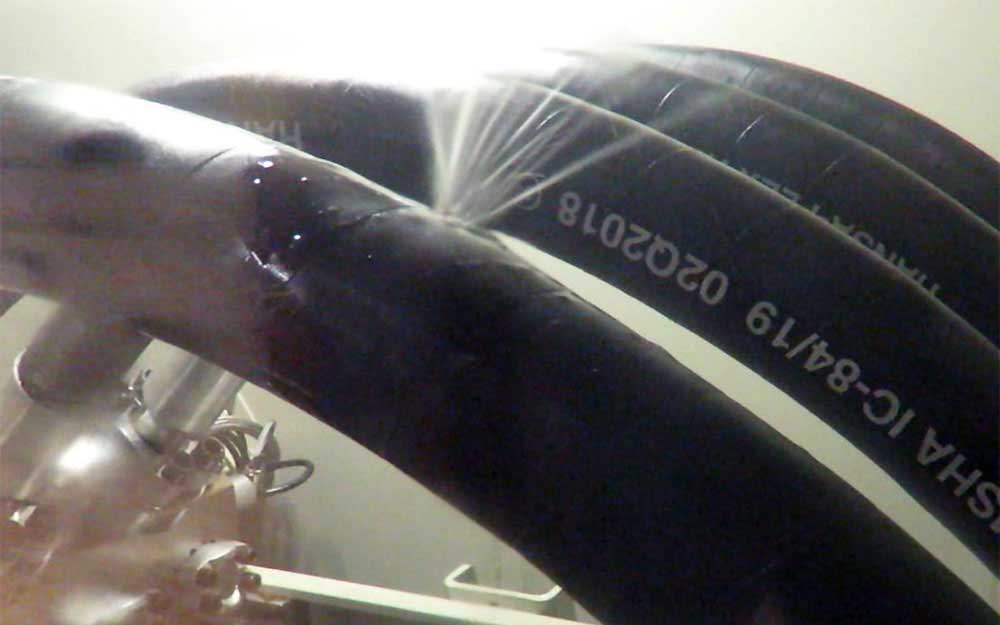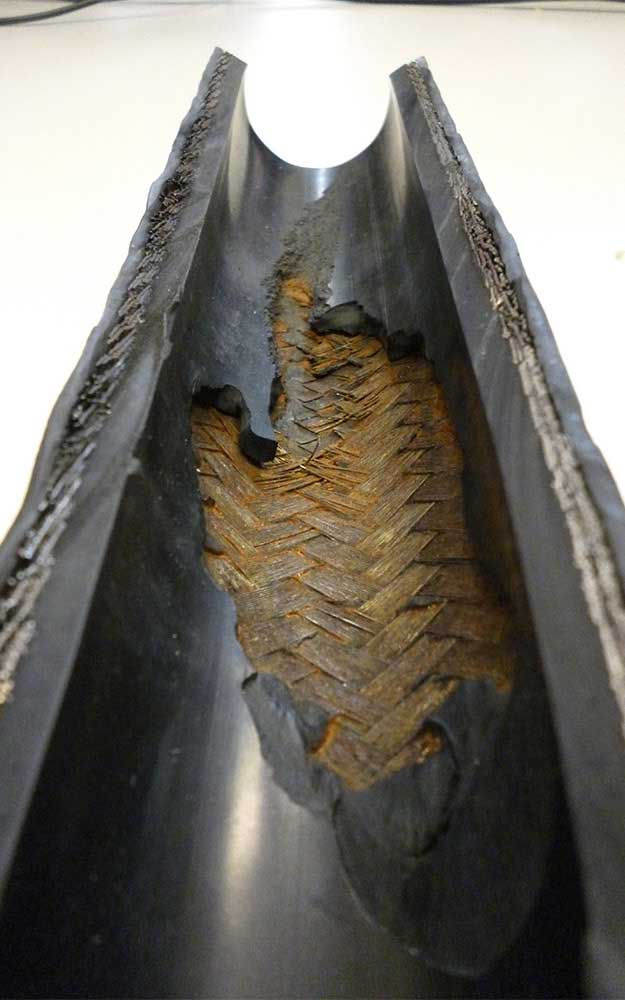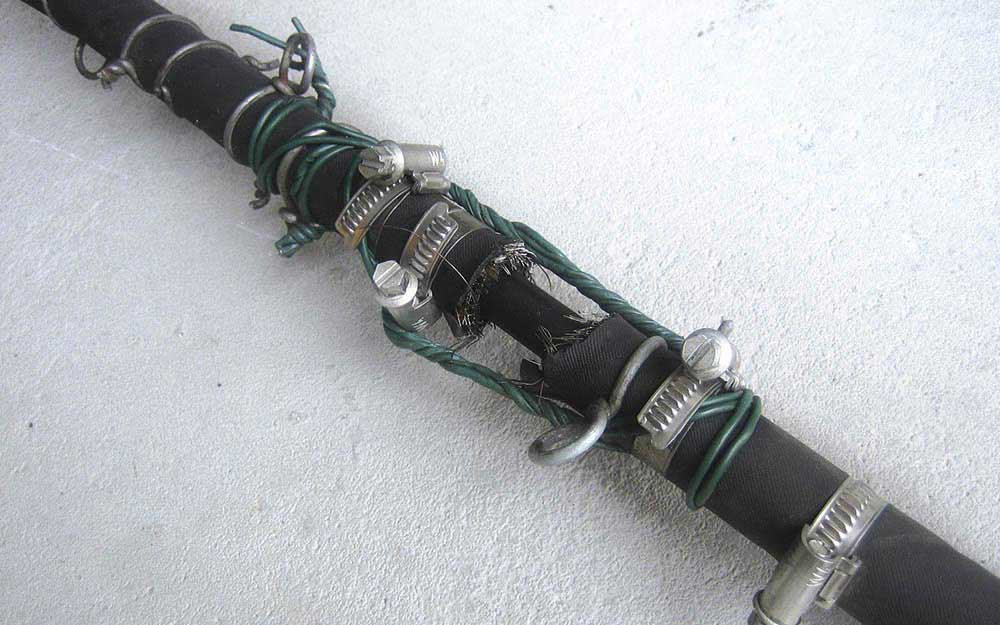People often try to seal leaks in hydraulic hose lines themselves by using clamps, insulating tape, shrink tubing, tape or even welding. Some of the pictures that the hydraulic line technology instructors from the HYDRAULICS ACADEMY see in this respect are really hair-raising. There seems to be no limit to what people will try to do. No clue - no concern! This attitude is extremely dangerous and can lead not only to serious environmental damage, but also to accidents involving severe injuries or even fatalities.
The forces at work in hydraulic systems are immense: in hydraulic presses, for example, several hundred tonnes of clamping force are not uncommon. The operating pressure in the hydraulic hose lines is correspondingly high: 400 bar is quickly exerted here. These figures make it clear that the materials involved are subjected to extreme loads. If hydraulic hose lines burst or hydraulic hose connections are ruptured, accidents can result in serious injuries or even fatalities. In spite of this, instructors from the HYDRAULIC ACADEMY repeatedly see operators trying to repair defective or leaking hydraulic hose lines themselves. This creates highly dangerous weak points that can have highly unpredictable consequences.
Hydraulic hose lines and hydraulic oil can cause serious injury
Many users simply can’t imagine what happens if a hydraulic hose suddenly tears out of its fitting. The consequences of the sudden escape of a fine jet of fluid (high-pressure jet) are even more extreme. The fine jet is under extremely high pressure and can penetrate or puncture the skin, or even sever a limb. The substances contained in the various components of the fluid can also cause muscle tissue to disintegrate. The result is not just serious injury, but also damage to property and the environment, which can have serious consequences for those responsible.
Repairing hydraulic hose lines is prohibited!
Precisely because of these accident situations, there is a strict rule: in accordance with DIN EN ISO 4413, a harmonised B2 standard, hydraulic hose lines that have already been in use must not be repaired. The prohibition on repairs also covers hydraulic hose fittings. The same applies to hydraulic pipelines. Welding repairs are not permitted here either, and are accordingly prohibited.
No re-use
Conclusion: a previously used hydraulic hose line that has been repaired must not be used again. Using it as a spare part is not permitted either. This applies as a matter of principle and without exception. A good reason for this is the condition of the hydraulic fluid which has flowed through the hose line. What is its status in terms of ageing or contamination, how high is the acid level or what is the condition of the additives in the oil? Contact with hydraulic oil that no longer fulfils the required standards can cause the inner layer of the hydraulic hose to swell or shrink even more than it already does under normal conditions. The result is a change in the dimensions of the hose. In addition, the hardness of the elastomer also changes and with it the necessary durability, which is highly relevant for the flow speed and is of great functional importance when the hydraulic hose fitting is crimped to the hose. As a result, the connection between the hydraulic hose and the fitting doesn’t have a secure hold. Leaks or even the hydraulic hose being torn out of its fitting are the result. Companies should therefore never ask a service provider to carry out a quick repair job for them, because most hydraulic hose assemblers expressly prohibit their employees from doing this in documented written instructions. If repairs are nevertheless carried out and an accident happens, it is the employee who carried out the repair who is liable. In this case, gross negligence quickly becomes wilful intent.
The ravages of time
Last but not least, the natural ageing of hydraulic hose lines also plays an important role. Over time, elastomers change their properties. This is usually not visible to the naked eye, but must always be taken into account. It is also impossible to rule out the possibility that the inner layer of the hydraulic hose has previously been damaged due to high flow velocities. Damage to the interior of the hose is very difficult to detect visually. As a result, the hydraulic hose line can malfunction within a very short time.
Forget about repairs
Leaks, ruptured hydraulic hose and pipelines, oil losses and the resulting machine and production downtimes are just as unacceptable today as the risk to persons and the environment.
This is where the currently applicable Ordinance on Industrial Safety and Health (BetrSichV) comes into play for companies and operators of hydraulic systems. In the use of operating equipment such as hydraulic hose lines, safety and protection of health take top priority. Any potential hazards arising from repairs to hydraulic hose lines must be eliminated in advance and prohibited within the company.
Scheduled work such as inspections, maintenance and servicing right across to optimisation of the system can be ensured by preventive maintenance measures. In the event of emergencies where time is of the essence, fast-response hydraulic service companies are also available around the clock. However, only certified service providers should be relied upon here. This ensures the safe and continuous operation of hydraulic systems at all times, provides legal compliance for the company and eliminates liability risks. Even more importantly, employees can go about their work with peace of mind - without risking their lives and without physical or psychological harm or damage to the environment.
Another major advantage is the greater machine availability resulting from compliance with safety requirements. Increased machine availability and a reduction in downtimes play a key role in any success concept that increases profits for the entire company. Specialist know-how in this field can be acquired by attending in-depth hydraulics seminars at the Hydraulics Academy.
-
![[Translate to Englisch:]](/fileadmin/hansaflex/News_and_Events/Online_Magazin/Technik/Autoren/ulrich-hielscher.jpg)
Ulrich Hielscher
Managing Partner, Trainer for line technology and hydraulic oils at the International Hydraulics Academy

